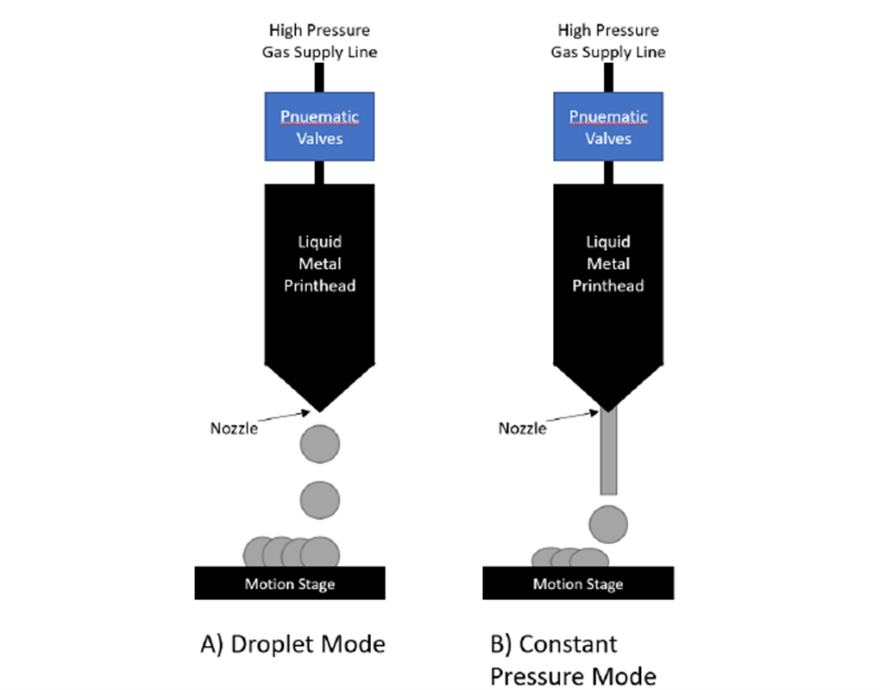Common 3D metal printing methods include powder bed fusion, powder-feed, wire-feed, or binder-jet based methods. These techniques require either high-power lasers and inert environments, or extensive post-processing. Liquid metal printing allows for printing of non-weldable metals and metal alloys. It is scalable and allows for melting of recycled metal. The challenge when using liquid metal printing is the surface finish of the fabricated 3D-printed part has a rough texture.
LLNL researchers have developed an approach is to use pneumatic droplet ejection devices to rapidly 3D print solid metal parts that also have a smoother surface finish than conventional liquid metal printing. Pneumatic droplet ejection printers can be used in two different modes: “droplet mode” uses pulsed gas pressure to create individual droplets of liquid metal that are collected to build up the part while “constant pressure mode” uses a constant gas pressure to produce a stream of liquid metal. LLNL’s novel technology uses “droplet mode” to produce the outline or contour of the part over many layers. The remainder of the part is filled using “constant pressure mode”.
- Value Proposition: Better method to create low surface finish 3D printed metal parts
- Lower surface roughness
- Higher build rates
- Higher part density
- In situ coating of 3D printed shape
- Rapid finishing of droplet printed parts
- Smoothing surface roughness of droplet printed parts
- Coating of complex droplet printed parts
Current stage of technology development: TRL 3 (Analytical and experimental critical function
and/or proof of concept)
LLNL has filed for patent protection on this invention.


